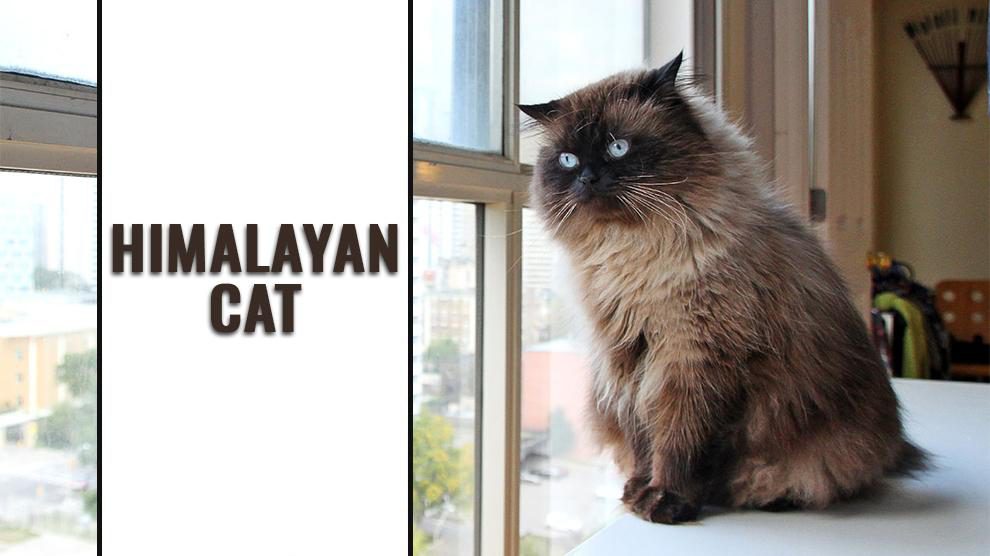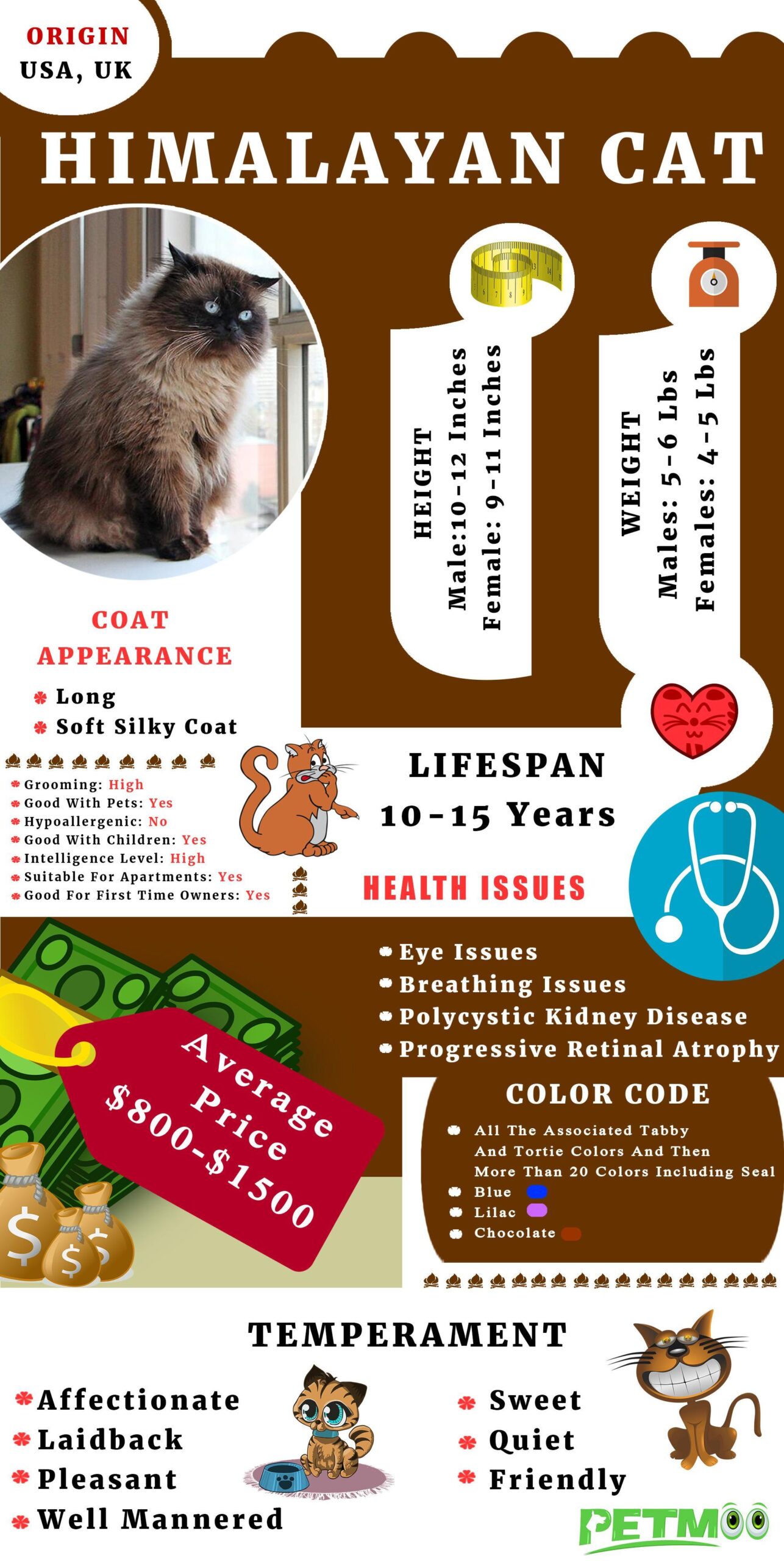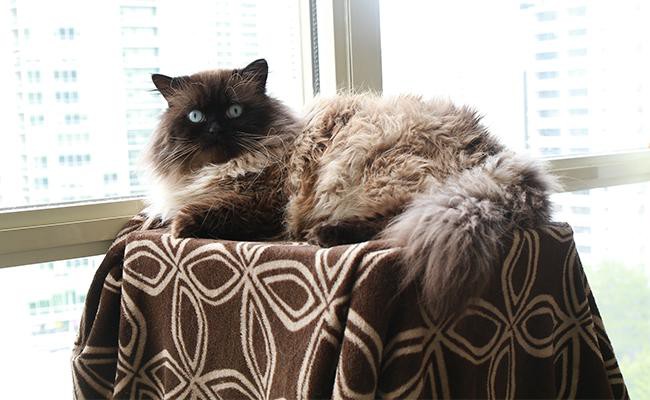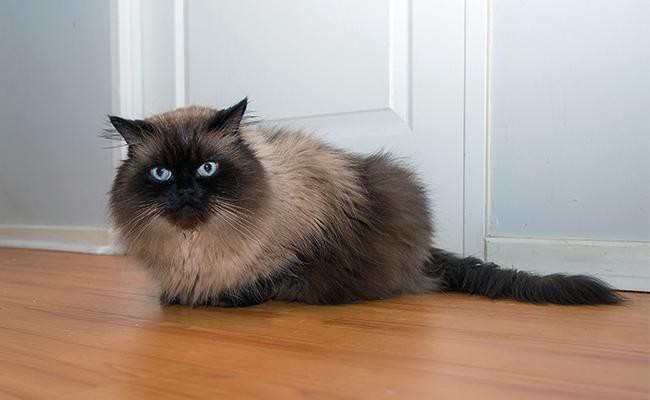Cat Pregnancy Calculator And Timeline
With its magnificent fluffiness, exceptional color-pointed coat design and striking blue peepers, it’s no wonder that the Himalayan is one of the most popular breeds on the professional cat show circuit.
There is still some debate lingers in cat world – Whether or not Himalayans are a distinct breed, however, the Himalayan’s affectionate nature and laid-back personality make these cats favorites in the pet world.
If the look of Himalayan is familiar to you, there’s a reason. The popular Himalayan, fondly called as Himmies, is a ‘Persian in Siamese drag’ although at least few cat registries consider him a distinct breed.
He was the result of interbreeding of the Siamese, the Persian and their offsprings. The outcome is a gorgeous feline with a silky, soft, Persian-like coat and Siamese-like angular faces, color variation of its fur and piercing blue eyes.
They were named Himalayan cats based on the color of the cat, which mimicked that of goats and rabbits living in the Himalayan Mountains.
Despite their larger size, Himalayans can be considered a “gentle giant” of the feline world. Calm and devoted, Himalayans make excellent companions, though they prefer a quieter home.
They adore the affection and attention of their owners. Best as indoor cats, they are sweet, sedate and people-oriented. Himalayans have enough adorable characteristics to celebrate them for the uniquely special kitties they are.
Himalayan Cat Breed Characteristics Sheet
- Origin: USA, UK
- Size: Medium
- Purebred: No
- Lifespan: 10-15 Years
- Height: Male:10-12 Inches (25 – 30 Cm), Female: 9-11 Inches (22 – 27 Cm)
- Weight: Males: 5-6 Kg (11 – 13 Lbs); Females: 4-5 Kg (9 – 11 Lbs)
- Coat Appearance: Long, Soft Silky Coat
- Coat Colors: More Than 20 Colors Including Seal, Blue, Lilac, Chocolate, And Then All The Associated Tabby And Tortie Colors
- Temperament: Affectionate, Laidback, Pleasant, Well Mannered, Sweet, Quiet, Friendly, Entertaining
- Good With Children: Yes
- Intelligence Level: High
- Good With Pets: Yes
- Hypoallergenic: No
- Grooming: High
- Shedding: High
- Suitable For Apartments: Yes
- Good For First Time Owners: Yes
- Health Issues: Polycystic Kidney Disease, Progressive Retinal Atrophy, Breathing Issues, Eye Issues
- Litter Size: 3- 6 Kittens
- Average Price: $700-$1,000
Himalayan Cat History
Through the 1920s and 1930s, breeders around the world tried to breed a cat with a long-haired cat similar to the Persian with Siamese markings.
Meanwhile, Virginia Cobb and Clyde Keeler, two medical researchers from Harvard cross-bred a Siamese female with a black, Persian male to study how certain genetic characteristics such as Siamese colorpoint cat gene was transmitted.
Although initially, their intention was not to produce a new breed of cat, these researchers finally produced the first official Himalayan kitten after cross-breeding several litters.
They named the cat as ‘Newton’s Debutante’ in 1931. Fascinated by the looks of Himalayan, British cat breeders started the breeding program comprehensively in 1935.
World War II slowed down the Breeding program, but after the war, Canadian breeder Ben Borett used Keeler- cobb recipe and bred long-haired Himalayan with color points of Siamese.
He named it as Long haired colorpoint and it was recognized by GCCF in 1955. In 1960, American breeder Marguerita Goforth created a Persian-bodied cat with Siamese pointed coloring named Lachiquita which became CFA champion.
This hybrid was officially recognized by the Cat Fanciers’ Association (CFA) in 1957 and the American Cat Fanciers’ Association.
In 1984, the Cat Fanciers’ Association reclassified the Himalayan as a color point variation of Persian, due to their similar body types.
Today, many cat associations still do not consider Persians and Himalayans to be separate breeds.
Whatever may be its status, the Himmies is among the most popular of pedigreed cats all around the world.
Chronological Himalayan Cat history
- 1931 – The first official Himalayan kitten ‘Newton’s Debutante’ is born.
- 1935 – British breeding program gets started
- 1957 – Officially recognized by CFA
- 1955 – colorpoint Long hair was Officially recognized by GCCF
- 1960 – Himalayan cat ‘Lachiquita’ became CFA champion
- 1984 – CFA made Himalayans as a sub-breed of the Persian cat.
Vital Stats
- Life expectancy: 10-15 years
- Weight of the male: 5-6 kg (11 – 13 lbs)
- Weight of female: 4-5 kg (9 – 11 lbs)
- Coat color: Long overcoat with a thick undercoat that comes in pointed colors and patterns. Some colors include blue, gray, chocolate, cream and lilac.
- Energy on a scale of 1 to 5: 2
- Vocal Tendency: Yes
- Himalayans have won over 41 national awards in the USA Since 1981
- Oldest Himalayan cat lived up to 22 years old
- A Himalayan cat named ‘Colonel Meow’ got into in the 2012 Guinness Book of World Records for the cat with the longest hair.
- The smallest cat in the world was a blue point Himalayan named ‘Tinker Toy’ from Taylorsville, Illinois.
Himalayan Cat Appearance
Himalayans are fluffy cats like Persians combined with the coloring of Siamese cats. These cats are a medium-sized cat breed and have body type more like Persians.
Persians are known for their beautiful long, fluffy coat and pushed-in faces.
They have angular facial features- large heads, with rounded features, full cheeks, flat snouts (some are flatter than others), small, separated ears with rounded tips that give importance to its striking blue eyes.
They look bigger than they are (due to larger frames and a lot of hair) but in fact, they are rather short and stocky.
There are two distinct facial types– peke-faced (extreme) and the traditional or doll-face. In both Himalayan types, the face has round eyes, undersized, round ears set low on the head, full cheeks, and a prominent chin.
The traditional type has many fans even though the extreme type is favored in the show ring. The traditional type has short and snub nose not so high on the face and only has a slight break.
Reportedly, Traditional type experiences fewer health problems than his peke-faced counterpart
The head is supported by a short, broad neck and a misleadingly strong, muscular body with an overall impression of roundness. This body type is known as “cobby.”
They have legs are short, thick legs with large, round, strong paws. They have a short tail but it is proportional to the body length.
Himalayan Cat Coat
When it comes to their coats, they have a long, thick, shiny coat with a fine texture like their Persian ancestors.
It covers all over the body and includes a plush ruff of the neck that continues to a deep frill between the front legs, long toe, and ear tufts, and a packed “brush,” or tail.
Their body is various shades of Ivory white, pale cream to fawn with definite contrast between body color and point color.
Temperature is so vital to point coloration as cats that live in cold environments will actually show darker points and cats in warmer environments are paler.
Initially, there were just 4 color points on Himalayan cats. These include chocolate, seal (black), blue and lilac. At the moment, there are 20 color points and combinations.
The different color points are as follows:
- Seal
- Chocolate
- Blue
- Lilac
- Cream
- Red(flame)
- Seal Tortie
- Chocolate Tortie
- Blue-Cream
- Lilac Cream
- Blue Tabby
- Seal Tabby
- Chocolate Tabby
- Red Tabby
- Lilac Tabby
- Cream Tabby
Himalayan Cat Temperament
Hammies have the personality traits of their own; they are not quite Siamese and not quite Persians. Like their Persian cousins, Himmies are sweet and gentle and like Siamese, they have many social characteristics.
Gentle, calm, and sweet-tempered, they make perfect indoor companions. They detest noisy places or sudden changes. Households that enjoy having lots of guests or move around a lot is not suitable for Hammies.
New environments and strangers stress them. These vibrant beauties may look stately and serious but they also possess a playful, light-hearted side. So it’s official now….The Himalayans have it all—beauty, brains, and adorable temperament.
Himalayans love to play fetch, and a store-bought kitty toy or just a scrap of crumpled paper will keep them entertained for hours.
They are much quieter and less active than the Siamese; however, they are more vocal and active than the Persians (thanks to their Siamese ancestry).
Certainly, they have inherited the Persian’s loving nature with just a dose of the Siamese’s talkativeness.
When you’re not home, they’re happy to lounge about lazily provided that you cuddle up with them at the end of the day. Hammies are submissive cats who won’t be getting into too much naughtiness.
They are not wild climbers or jumpers, however, once in a while they will gladly climb on furniture and declare any chair as their own.
They can easily become very anxious when being chased around the house by boisterous kids. These cats do not mind well-behaved children and cat-friendly dogs.
Male Himalayans vs Female Himalayans
Male Himalayans are more sociable and playful than females. They don’t need more time to warm up to their owners.
Female cats tend to be more withdrawn and need more time to warm up to their owners and other family members. They may be slightly less playful and somewhat timid, but they maintain the charm of a typical Himalayan cat.
Who Gets Along With Himalayan cats?
- A great option for parents with older kids and other pets
- Perfect for first-time cat owners and seniors
- Active as well as laidback households
- Apartment dwellers
- Houses in farms and country homes
Himalayan Cat Grooming
Grooming for a Himalayan cat is all fun and pleasing experience. However, it’s easy to be in awe of this breed’s coat but when they are uncared for and not often groomed, the cat’s coat will easily get tangled.
Typically Himalayans need considerable amounts of grooming. That long, luxurious coat doesn’t stay tangle-free and clean on its own. These cats need regular combing of hair. However, they don’t require any other type of special handling.
Always use a soft bristle brush or if needed a slicker brush which can help remove excess hair that contributes to matting and tangles.
With your fingers, carefully untangle fur and trim the matted area only when the tangles are too stubborn. While trimming the tangled area, pass up your cat’s whiskers.
How to find Best Brushes for Himalayan Cats?
Always pick out a brush that’s comfortable to use. Get an easy-grip brush with an ergonomic handle as you would spend a great amount of time brushing your cat and at the same time, you don’t want to strain your hand in doing so.
The brushes with gentle bristles will be gentle on your cat’s skin and hair. This would make your cat enjoy the grooming session rather than dreading it.
Brushes with the firm, short bristles, and Brushes with bent wire bristles are ideal brushes for grooming these cats.
Bent wire-bristle brushes make it easy to brush through the Himalayan cat’s thick coat solving tangle problems. Brushes with the firm, short bristles are great in getting rid of loose, dead hair and help the cats with the shedding problem.
As for groomers, it is essential to have a brush that’s durable, easy to clean and that will not easily lose its bristles. Obviously, you would want to have a brush that can be around for years.
Plastic or wood brushes will be great but make sure you’ll find one that has the above qualities to withstand daily use.
Our recommendations include
- Smart self Self-cleaning Slicker Brush for Long-Haired Cats and Dogs
- Hertzko Self Cleaning Slicker Brush
- Four Paws Magic Coat Gentle Slicker Wire Brush
- The Petseeker Grooming Self Cleaning Slicker Brush
- Li’l Pals Kitten Slicker Brush ( for kittens)
Best for Shedding: Paws & Pals‘ Pet Grooming Brush
For Mats: Andis Pet Steel Grooming Comb
For Baths: Hertzko Pet Bath & Massage Brush
Best Glove: DELOMO Pet Deshedding Glove
Himalayan Cat Care
They struggle in warm temperatures due to the compromised respiratory system of Himalayans (they are brachycephalic cats). They fare best in a cool, air-conditioned environment.
In a hot climate, they should not be allowed outside and most Himalayans should be kept indoors year-round.
A flea comb is helpful for the cats with fleas. They are useful even your cat doesn’t have fleas as they are good for combing around your cats face and his ears. Make no mistake… your cat will love this attention.
Check the cat’s teeth and ears regularly. Check if there are any abscesses on the gums or mouth and any wax build-up or infections.
It indeed a subject to dispute whether or not Himalayan cats are likely to cause more allergic reactions than other breeds.
There is no confirmed way to ensure that a Himalayan is hypoallergenic but there are a few things you can do to reduce the chances of a reaction.
- Steam clean carpets and fabrics
- Clean floor and furniture if possible to reduce trapped hair
- Groom your cat regularly
Himalayan Cat Food
Take a Quick Look at Our Top Picks for 2019
Best Overall:
Wellness Complete Health Natural Dry Cat Food
Royal Canin Feline Health Nutrition Indoor Adult Dry Cat Food
Premium Choice (for a healthy coat):
Hill’s Science Diet Hairball Control
BLUE Adult Indoor Hairball Control Chicken Recipe
Best Dry Cat Food: Orijen Cat & Kitten Dry Cat Food
Canned Cat Food: Ziwi Peak Venison Grain-Free Canned Cat Food
For Kittens: Whole Earth Farms Grain-Free Healthy Kitten Recipe
Best for Weight Management: Nature’s Variety Instinct Ultimate Protein Cat Food
For sensitive cats: BLUE for Cats Adult Dry Cat Food – Sensitive Stomach Chicken and Brown Rice formula
Himalayan Cat Health Problems
Himalayans are prone to common health issues and the most common diseases that affect them are:
1. Polycystic kidney disease (PKD)
This is a hereditary condition causing enlargement of kidneys resulting in kidney dysfunction.
This is more common in older cats around 7 to 10 years as old but it can occur in cats as young as three years old. Responsible breeders carry out a DNA test for this condition and only breed cats that are tested PKD negative.
2. Progressive Retinal Atrophy
This is another serious concern for Himalayan cat’s eyes as they are prone to early-onset progressive retinal atrophy (PRA).
This is an inherited mutation common to Himalayans as kittens start showing symptoms around 4 to 8 weeks of age, and it quickly progresses to blindness as they age.
3. Breathing issues
Brachycephalic cats or flat-faced breeds may develop breathing issues which is one of the reasons that Brachycephalic cats are often lazy or lacking in energy.
Even if they do not have any breathing issues, don’t expect a more active lifestyle from them as they can’t get enough oxygen into their system like their longer nosed cousins.
4. Eye issues
The shortened skull of Brachycephalic cats also causes distorted tear ducts, so that rather than the moisture in their eyes draining naturally down, it flows down their faces causing tear duct infections, dermatitis, not to mention the ugly staining of the fur.
The shallow eye socket causes the bulging of ears which can result in corneal problems.
Himalayan Cat Price
So, how much do Himalayan kittens cost? $700-$1,000.
- Pure-bred kittens from lesser-known breeding farms may cost $500-$700
- From well-known breeding farms, the cost is $700 to $1000.
- Himalayans bred from Championship quality queens and toms cost around $1,000- $1,500
















